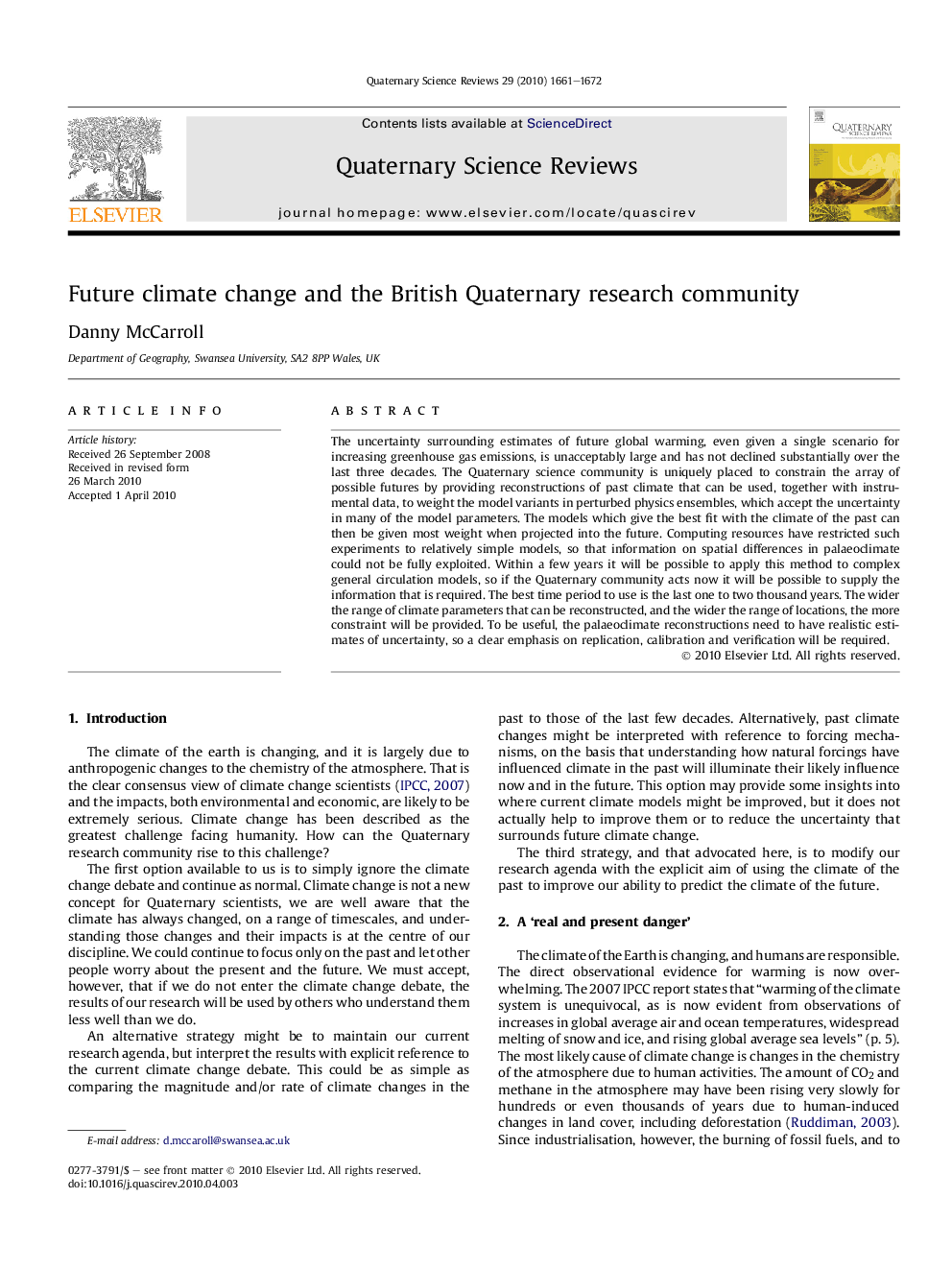| Article ID | Journal | Published Year | Pages | File Type |
|---|---|---|---|---|
| 4737209 | Quaternary Science Reviews | 2010 | 12 Pages |
The uncertainty surrounding estimates of future global warming, even given a single scenario for increasing greenhouse gas emissions, is unacceptably large and has not declined substantially over the last three decades. The Quaternary science community is uniquely placed to constrain the array of possible futures by providing reconstructions of past climate that can be used, together with instrumental data, to weight the model variants in perturbed physics ensembles, which accept the uncertainty in many of the model parameters. The models which give the best fit with the climate of the past can then be given most weight when projected into the future. Computing resources have restricted such experiments to relatively simple models, so that information on spatial differences in palaeoclimate could not be fully exploited. Within a few years it will be possible to apply this method to complex general circulation models, so if the Quaternary community acts now it will be possible to supply the information that is required. The best time period to use is the last one to two thousand years. The wider the range of climate parameters that can be reconstructed, and the wider the range of locations, the more constraint will be provided. To be useful, the palaeoclimate reconstructions need to have realistic estimates of uncertainty, so a clear emphasis on replication, calibration and verification will be required.
